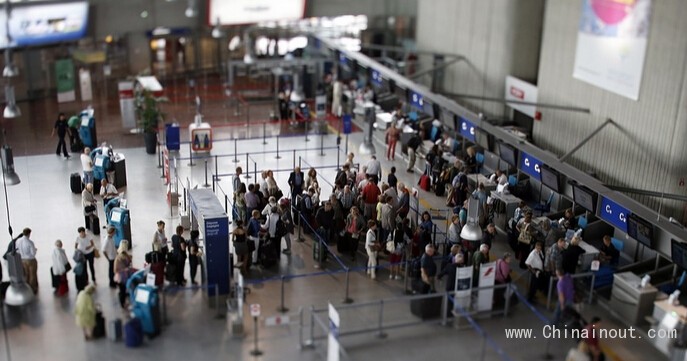華盛頓(市場觀查者)—美國經濟2014年迎來了自二戰后最曲折的復蘇而且年末能源方面又遇到了大的波折,但是2015年美國經濟將披荊斬棘變得更好。
下面是消費者和投資者在2015年也許可以期盼的5個好消息。
經濟增長率將會首次達到3%在這十年里
美國在2014年的新增工作崗位被設定為300萬個—這是自1999年以來最大的增加量。新增工作崗位的增加預計在2015年將會對得到持續,這將確保消費者支出得到持續的動力;同時汽油價格的下降也將為家庭支出節省額外的開支用以購買其他的商品和服務。詳見:汽油價格在2014年下降美國將會節省140億美元開支。
消費支出的上漲反過來促使了更多的租賃和投資以跟上上漲的銷量。使美國經濟自2005年來經濟增長率首次達到3%以上。
Bernard Baumohl 作為Economic Outlook Group的首席經濟學家,表示他甚至更樂觀的認為接下來的兩年將會成為至少近十年以來形勢最好的兩年,他還稱“有很多證據充分的表明了經濟正在恢復的勢頭”。
也許經濟增長率是否能達到3%的國內最大威脅是利率的突然調整,但是從各方面的預測來看鴿派的美聯儲在2015年不太可能會采用挑釁的利率策略。
在數年的停滯之后薪酬將會加速提升
過去4年里束縛經濟增長的主要因素就是停滯不前的薪酬水平。時薪年平均增長率僅為2%—僅有過去美國長期薪酬增長率的三分之二。
盡管隨著租賃成本的上升和失業率的下降,薪酬最終會會上升;商人們將會在招聘勞動力上付出更多的成本而且還有可能由于缺乏員工以增加產量而導致銷售量下降的風險。
“我去的每一個地方,都發現企業主對未來的需求量有一個很好的預期,” Gus Faucher PNC金融服務機構的資深經濟學家稱。“商人必須提高薪酬來吸引更多的勞動力或者保留原有的工人”。
市場已經做出了回應:2014年9月份的工作空缺崗位在過去14年里達到了最高的水平,還有另一個能說明問題的數字人們辭職的速度達到了過去五年里的新高,調查顯示人們辭職后通常立即換了一份薪酬更高的工作。
失業率的大幅下降的實際效果將會有所體現
在過去三年失業率已從8.6%降至5.8%,但是包括美聯儲,幾乎沒有人認為勞動力市場現在是真的健康。
大約一千八百萬人,想要得到一個好的全職工作,但卻沒能找,這一數字在金融危機過后五年半左右的恢復時間中是高得不尋常的,而且盡管失業時間在半年及以上的人數大幅下降,然而這個數字仍然比2007年7月金融危機發生之前的任何時候都要高。
失業率減幅在2015年的下降得可能不會那樣的迅速,據經濟學家所言,特別是如果更多的人進入勞動力市場由于更容易找到工作。盡管如此和2014年相似的大量招聘和錄用將會使低的失業率數據顯得更加的可信。
Faucher說“在2015年年底我們的失業率大致會處在5%到5.5%之間,而且會讓我們更加實際的感受到這一點”。
劇烈動蕩石油產量—隨著更加緩慢增長的世界經濟—造成了原油價格從2013年100美元一桶到2014年年末的幾乎50美元一桶的大幅下降,而在美國國內2014年初卻造成了通貨膨脹的相反影響
也許同等重要的是,穩定或者下降的油價將會緩解通貨膨脹壓力使美國工人的工資更具有購買力。Renaissance Macro經濟學家Neil Dutta 稱“這對于國內需求來說是一個明確的積極的消息,人們將會有更多可以用來消費的錢”。
就算油價在2015年有可能反彈,但是油價幾乎不可能再短期內回到100美元一桶,除非在世界主要產油地區發生廣泛的地緣政治危機。所以這份禮物將在2015年得到持續并且長久的促進美國經濟的加快復蘇。
為保證更快的經濟增長就必須要要消除美聯儲所擔憂的另一個惡魔:通貨緊縮,或者說價格下降。Baumohl稱“經濟增長達到3%以上,并且自90年代以來新增了大量工作的國家發生通貨緊縮幾乎是不可能的”。
美國經濟將會表現得更好就算世界上其他地區沒能做到
全球緩慢的經濟增長并不會很大程度的拖累美國。美國的出口額雖然可能持平甚至下降,但是這將會被由于油價下降的石油進口額抵消,所以貿易赤字并不會給美國經濟造成更進一步的影響。
盡管外貿額占經濟總量的比重逐漸增大,但是相比那些每天都大量采購各種日用品,食品而且隨意采納金融方面建議的歐洲和亞洲的主要競爭者,美國經濟更容易免受外部不良因素的沖擊,實際上相比與外國的競爭者具有更好的抵御危機的能力。
總的來說:世界最大經濟體任然可以入常運轉就如同沙漠中的綠洲就算有末世預言宣稱那樣的日子已經遠去了。(中國進出口網)
WASHINGTON (MarketWatch) — The U.S. economy finally got a big jolt of energy in 2014 afterthe lamest recovery since World War II. And 2015 is shaping up to be an even better year.

Here are five things consumers and investors can count on (probably) in 2015:
The economy will grow 3% for the first time in 10 years
The U.S. is set to add nearly 3 million jobs in 2014 — the biggest increase since 1999. Theburst in job creation, expected to continue in 2015, is sure to fuel consumer spending. So,too, will a plunge in gasoline prices that's given households extra cash to spare on othergoods and services. See: Americans saved $14 billion as gasoline prices declined in 2014.
The pickup in consumption in turn will entice businesses to hire and invest more to keep upwith rising sales. The result: The U.S. is likely to grow more than 3% for the first time since2005.
Bernard Baumohl, chief global economist of the Economic Outlook Group, said he is even moreoptimistic. "The next two years could be the best two we have seen in at least a decade," hesaid. "There is clearly a lot of evidence the economy is gaining a lot of momentum."
Perhaps the biggest domestic threat to the 3% growth scenario would be a surprisingly swifthike in interest rates, but from all indications a dovish Federal Reserve is unlikely to takeaggressive action in 2015.
Wages will finally accelerate after years of stagnation
One of the main shackles on the economy over the past four years has been stagnant wages.Hourly earnings have risen an average of 2% annually — just two-thirds of the long-term U.S.average.
Yet that's finally about to change. With hiring up and unemployment falling, businesses willhave to go the extra mile for employees or risk losing sales to competitors because they lackenough staff to boost production.
"Everywher I go business owners are seeing an increase in demand," said Gus Faucher, senioreconomist at PNC Financial Services. "Businesses will have to raise wages to attract or maintainworkers."
Businesses are already responding: Job openings in November hit the second highest level in 14years. In another telltale sign, people are quitting jobs at the fastest rate in five years. Researchshows that people who quit one job for another typically do so because they are offered higherpay.
The sharp decline in unemployment will start to seem real
The unemployment rate has plunged over the past three years to 5.8% from 8.6%, butalmost nobody, including the Federal Reserve, thinks the labor market is really that healthy.
Some 18.1 million people, for example, want a good full-time job but can't find one, anunusually high number 5 1/2 years into a recovery. And despite a sharp decline in the numberof people out of work six months or longer, that figure is still higher than at any time beforethe 2007-09 recession.
The unemployment rate probably won't fall quite as rapidly in 2015, according to economists,especially if more people enter the labor force because jobs are easier to find. Yet another largespate of hiring similar to the gain in 2014 would make the low unemployment rate morebelievable.
"By the end of next year we will be at the point wher the unemployment rate is between 5%and 5.5%, and it will truly feel legitimate," Faucher said.
Inflation (and deflation) won't rear its ugly head Surging oil production — along with slowerglobal growth — has caused the price of petroleum to collapse from more than $100 a barrellast summer to barely $50 a barrel at the end of 2014. The effect has been to reverse anuptick in U.S. inflation earlier in the year.
Perhaps just as important, stable or falling prices will boost the inflation-adjusted pay of U.S.workers and gives them more bang for their buck. "It's an unambiguous positive forhousehold demand," said Neil Dutta, head of economics at Renaissance Macro Research. "Peoplewill have more money to spend."
While oil prices may rebound in 2015, they almost certainly won't return to $100 a barrel anytime soon, barring a geopolitical crisis in a major petroleum-producing region. So the gift willkeep giving this year and further feed an accelerating U.S. recovery.
Faster growth should also dispel worries about another Fed bogeyman: deflation, or fallingprices. "It's impossible to have deflation in an economy growing 3%-plus and adding the mostjobs since the 1990s," Baumohl said.
The U.S. will perform well even if the rest of the world doesn't
Slow growth around the world won't hurt the U.S. all that much. American exports mightflatten out or even dip, but that would be offset by lower imports of petroleum because ofsinking oil prices. So the trade deficit is unlikely to get further out of whack.
Although foreign trade accounts for a greater share of the economy than ever, the UnitedStates is still more insulated than virtually every major competitor in Europe and Asia. Sucheveryday purchases as haircuts, dry cleaning, financial advice and eating out are virtuallyimmune from foreign competition.
The upshot: The world's largest economy can still function as an oasis in a desert despite theclaims of doomsayers that those days are over.











